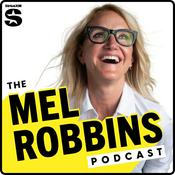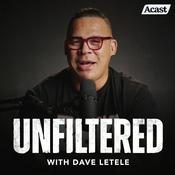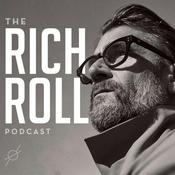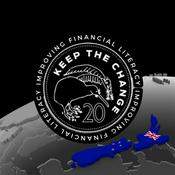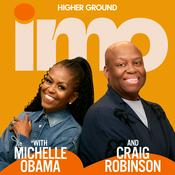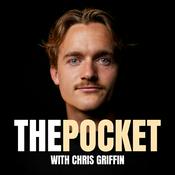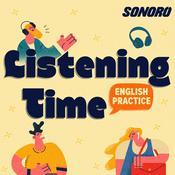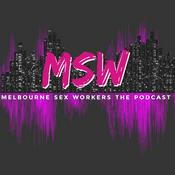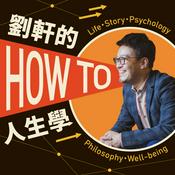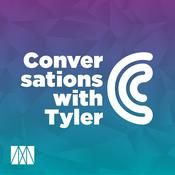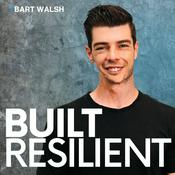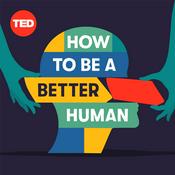The Maritime History Channel By The North American Society For Oceanic History
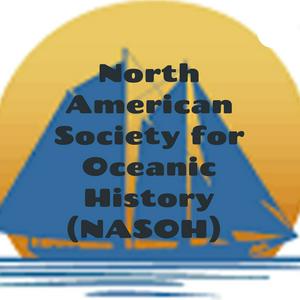
29 episodes

Sailing School: Navigating Science and Skill: 1550-1800, Margaret Schotte
16/7/2021 | 50 mins.
Margaret E. Schotte’s “original, perceptive, and scholarly” comparative study focuses on early modern navigators and their contributions to modern science. Sailing School investigates how early modern sailors developed mathematical and technical expertise in the age of exploration and the print revolution. Schotte’s monograph draws upon hundreds of dog-eared textbooks and salt-stained student manuscripts to recreate the experience of learning to sail, a complex apprenticeship that took place not only on board ship but in small classrooms in Europe’s port communities. Sailing School brings together the eccentric teachers, inventive entrepreneurs, ambitious politicos and a host of anonymous sailors to give us a new picture of what it meant to be an expert navigator at a time when knowledge of the natural world was undergoing dramatic shifts–and how these experts in turn contributed to the development of scientific practice in their local communities and beyond. https://www.sailingschoolbook.com/ Margaret Schote https://margaretschotte.com/

NASOH #024 - Kevin Bertram, The Shores of Tripoli: U.S. Navy & Marine Corps vs The Pirates of Tripoli
15/12/2020 | 40 mins.
From the end of the American Revolution, commercial vessels of the young United States republic were easy prey for the pirates of the Barbary coast. In 1801, newly inaugurated President Thomas Jefferson was eager to put an end to this threat and sent a “squadron of observation” to the Mediterranean. As the squadron arrived in Gibraltar, they learned that the bashaw of Tripoli had already declared WAR! The Shores of Tripoli plays out this exciting episode of Early American military history. As the United States, one player will pressure Tripolitania to allow the free movement of American merchant vessels – or face the consequences. As the bashaw of Tripoli, the other player will continue the lucrative piracy of the fearsome corsairs while countering the American threat on land and sea. Beautiful and informative cards represent historical events and leaders from the First Barbary War. Players can move ships, start battles, go on pirate raids, engage in diplomacy and receive reinforcements. Includes over 80 wooden playing pieces, 24 dice and a premium mounted map. https://www.fortcircle.com/games/ When you purchase the game, type in the code NASOH and a $6 contribution will be made to the organization to help fund graduate student research into the maritime history. How to play The Shores of Tripoli in 11 Minutes https://youtu.be/6oiwPgsssjM Unboxing: The Shores of Tripoli from Fort Circle Games - The Players' Aid https://youtu.be/FPIpZkMeZOQ

NASOH #023 - Ahab's Rolling Sea: A Natural History of Moby-Dick
09/11/2020 | 45 mins.
Although Herman Melville's Moby-Dick is beloved as one of the most profound and enduring works of American fiction, we rarely consider it a work of nature writing—or even a novel of the sea. Yet Pulitzer Prize–winning author Annie Dillard avers Moby-Dick is the "best book ever written about nature," and nearly the entirety of the story is set on the waves, with scarcely a whiff of land. In fact, Ishmael's sea yarn is in conversation with the nature writing of Emerson and Thoreau, and Melville himself did much more than live for a year in a cabin beside a pond. He set sail: to the far remote Pacific Ocean, spending more than three years at sea before writing his masterpiece in 1851. A revelation for Moby-Dick devotees and neophytes alike, Ahab's Rolling Sea is a chronological journey through the natural history of Melville's novel. From white whales to whale intelligence, giant squids, barnacles, albatross, and sharks, Richard J. King examines what Melville knew from his own experiences and the sources available to a reader in the mid-1800s, exploring how and why Melville might have twisted what was known to serve his fiction. King then climbs to the crow's nest, setting Melville in the context of the American perception of the ocean in 1851—at the very start of the Industrial Revolution and just before the publication of On the Origin of Species. King compares Ahab's and Ishmael's worldviews to how we see the ocean today: an expanse still immortal and sublime, but also in crisis. And although the concept of stewardship of the sea would have been entirely foreign, if not absurd, to Melville, King argues that Melville's narrator Ishmael reveals his own tendencies toward what we would now call environmentalism. Featuring a coffer of illustrations and an array of interviews with contemporary scientists, fishers, and whale watch operators, Ahab's Rolling Sea offers new insight not only into a cherished masterwork and its author but also into our evolving relationship with the briny deep—from whale hunters to climate refugees. Richard J. King is an author and illustrator. Most recently, he wrote Ahab's Rolling Sea: A Natural History of Moby-Dick, lauded in Science, Nature, and American Scholar. He also wrote Lobster, which was acclaimed by the New York Times and The Wall Street Journal; and The Devil's Cormorant: A Natural History, which was short-listed for the ASLE Creative Book Award and rated as one of the top five science books of 2013 by Library Journal. His next project is Audubon at Sea, an anthology co-edited with Christoph Irmscher (Chicago UP, forthcoming 2021). Richard J. King https://www.richardjking.info/index.htm Ahab's Rolling Sea: A Natural History of Moby-Dick https://www.richardjking.info/ahab_s_rolling_sea__a_natural_history_of_moby_dick_.htm

NASOH #022 - Corbin Williamson, The U.S. Navy and Its Cold War Alliances, 1945-1953
22/10/2020 | 46 mins.
After World War I, the U.S. Navy’s brief alliance with the British Royal Navy gave way to disagreements over disarmament, fleet size, interpretations of freedom of the seas, and general economic competition. This go-it-alone approach lasted until the next world war, when the U.S. Navy found itself fighting alongside the British, Canadian, Australian, and other Allied navies until the surrender of Germany and Japan. In The U.S. Navy and Its Cold War Alliances, 1945–1953, Corbin Williamson explores the transformation this cooperation brought about in the U.S. Navy’s engagement with other naval forces during the Cold War. Like the onetime looming danger of Nazi Germany and Imperial Japan, growing concerns about the Soviet naval threat drew the U.S. Navy into tight relations with the British, Canadian, and Australian navies. The U.S. Navy and Its Cold War Alliances, 1945–1953, brings to light the navy-to-navy links that political concerns have kept out of the public sphere: a web of informal connections that included personnel exchanges, standardization efforts in equipment and doctrine, combined training and education, and joint planning for a war with the Soviets. Using a “history from the middle” approach, Corbin Williamson draws upon the archives of all four nations, including documents only recently declassified, to analyze the actions of midlevel officials and officers who managed and maintained these alliances on a day-to-day basis. His work highlights the impact of domestic politics and security concerns on navy-to-navy relations, even as it integrates American naval history with those of Britain, Canada, and Australia. In doing so, the book provides a valuable new perspective on the little-studied but critical transformation of the U.S. Navy’s peacetime alliances during the Cold War. Corbin Williamson is assistant professor of strategy, Air War College, Montgomery, Alabama. His work has appeared in numerous publications, including books such as The Culture of Military Organizations and The Vietnam War in Popular Culture and periodicals such as the International Journal of Naval History, Diplomatic History, and Joint Force Quarterly. Corbin Williamson https://www.linkedin.com/in/corbin-williamson-39388a8/ The U.S. Navy and Its Cold War Alliances, 1945-1953 https://kansaspress.ku.edu/978-0-7006-2978-7.html

NASOH #021 - James Lindgren, Preserving Maritime America: The South Street Seaport & Conclusion
05/10/2020 | 44 mins.
The final of six parts of our interview with James Lindgren, an Honorable Mention in this year's John Lyman Prize, his book Preserving Maritime America looks at six maritime museums. In this episode we discuss New York City's South Street Seaport and Dr. Lindgren includes his conclusion on the state of America's maritime museums and history. The United States has long been dependent on the seas, but Americans know little about their maritime history. While Britain and other countries have established national museums to nurture their seagoing traditions, America has left that responsibility to private institutions. In this first-of-its-kind history, James M. Lindgren focuses on a half-dozen of these great museums, ranging from Salem’s East India Marine Society, founded in 1799, to San Francisco’s Maritime Museum and New York’s South Street Seaport Museum, which were established in recent decades. Begun by activists with unique agendas—whether overseas empire, economic redevelopment, or cultural preservation—these museums have displayed the nation’s complex interrelationship with the sea. Yet they all faced chronic shortfalls, as policymakers, corporations, and everyday citizens failed to appreciate the oceans’ formative environment. Preserving Maritime America shows how these institutions shifted course to remain solvent and relevant and demonstrates how their stories tell of the nation’s rise and decline as a commercial maritime power. Dr. James Lindgren: https://www.plattsburgh.edu/academics... Preserving Maritime America: A Cultural History of the Nation's Great Maritime Museums https://www.bibliovault.org/BV.book.e... South Street Seaport https://southstreetseaportmuseum.org/ The greatest city in the world was a port before it was a city. Founded in the port-birthplace of New York, the Seaport Museum connects us as New Yorkers to our roots. Today, in what we still have of that lower Manhattan seaport, the Museum tells the story of a growing metropolis, connecting the stories of immigrants, enslaved people, merchants, indigenous people, and workers—early New Yorkers—to the present day. This institution is not new to setbacks. Since its founding in 1967 it has been knocked back repeatedly. It was closed for nearly two years following 9/11, hit early and hard by the 2008 financial crisis, flooded by Sandy, and now closed by the pandemic. The museum has been battered to the point of closure practically every half-decade, and yet it persists. First, it’s a museum that represents the essence of our city, and the people who built it. Second, it has a loyal group of devotees who passionately defend it. Board, staff, volunteers, members, New Yorkers. These people understand the Museum’s importance. Its very existence is an audacious idea made real and replicated nowhere else: a museum in symbiosis with an historic port district at the heart of this global metropolis.
More Education podcasts
Trending Education podcasts
About The Maritime History Channel By The North American Society For Oceanic History
Listen to The Maritime History Channel By The North American Society For Oceanic History, The Mel Robbins Podcast and many other podcasts from around the world with the radio.net app

Get the free radio.net app
- Stations and podcasts to bookmark
- Stream via Wi-Fi or Bluetooth
- Supports Carplay & Android Auto
- Many other app features
Get the free radio.net app
- Stations and podcasts to bookmark
- Stream via Wi-Fi or Bluetooth
- Supports Carplay & Android Auto
- Many other app features


The Maritime History Channel By The North American Society For Oceanic History
download the app,
start listening.
